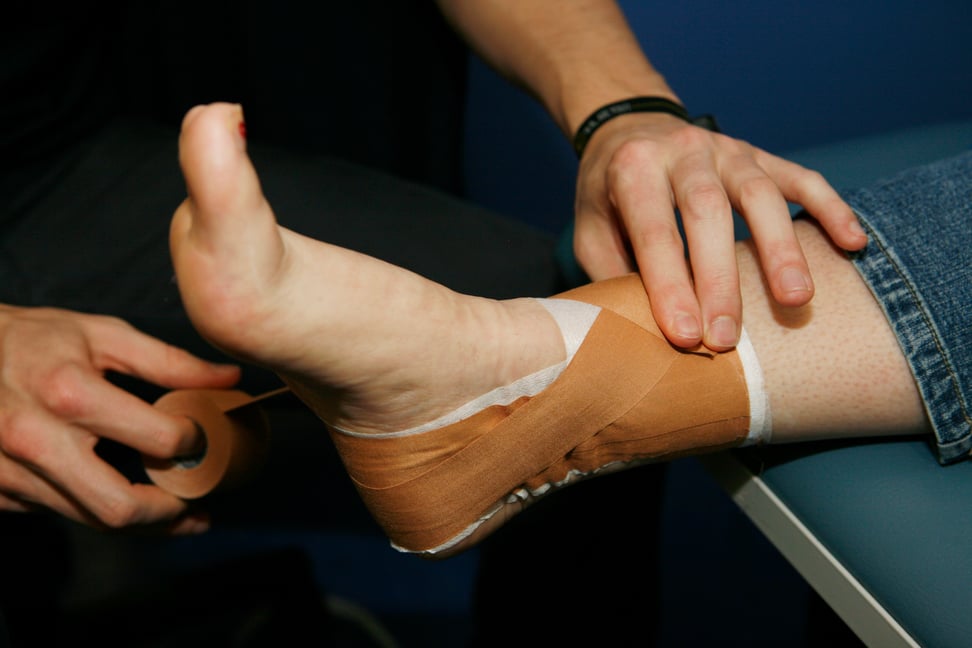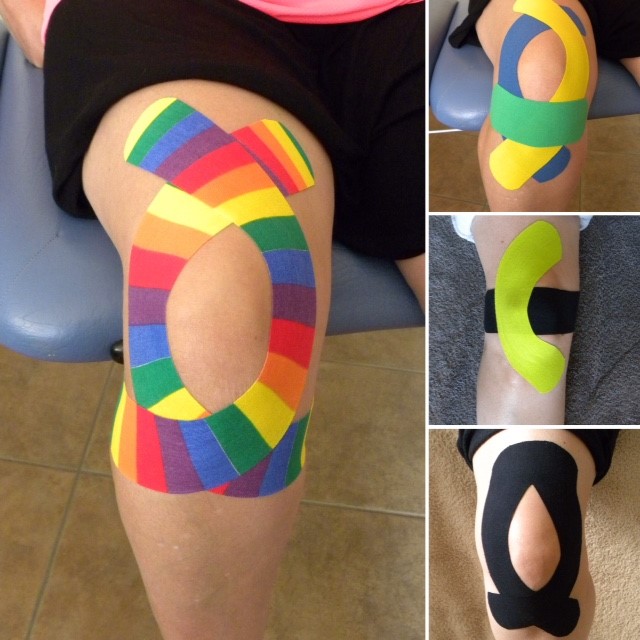Can taping help my knee pain?
Watching any professional sport these days, I’m always surprised by the number of players who have rigid and kinesiotape all over their bodies. From knees to hands to shoulders to thighs it can certainly look like they’re being held together by tape!
So surely if these professional athletes use tape it must be a good idea, right?
Well, not necessarily for your knee pain.
These athletes are being paid to perform and might be playing through injury or discomfort to meet the demands of their team and coach. They might also need protection to help them avoid a costly injury.
But where does taping fit in for your knee pain?
It’s first important to understand the different types of taping available and it's proposed effects.
The more traditional brown taping is known as rigid tape and provides a more stiff support. This might be used with white tape underneath to help secure it and protect the skin. This taping is commonly used in sports like Rugby League/ Union or Aussie rules football. It provides a higher level of support and is often used to help the stability of ankles, shoulders or knees.

More recently, the often more colourful Kinesio or dynamic tape has become popular in the management of many different joints. Click here to read Errol's brief intro to Rocktape. Personally, I see this taping benefit many of my clients and they are quite happy to wear it for its support and sometimes pain relief. But as an instructor for Rocktape, a large kinesio taping brand, I need to let patients and other therapists know that this is merely an adjunct to the rest of their management and recovery.
And how does it work?
It is proposed that the taping may help to provide some lifting of the various layers of skin reducing compression and pain. The increased feedback on the skin may also improve awareness of the muscles and allow for better muscle activation patterns. More rigid or supportive taping may provide a slight mechanical resistance and help avoid certain postures or positions of injury. Unfortunately due to the complexity of the body we can't be certain exactly how this treatment effects people- but seeing positive response to it day in and day out I am going to keep it in my physio toolbox!

For Osteoarthritis the two interventions which have the strongest levels of evidence are:
- Weight loss/ management
- Exercise
So if these taping techniques help with a patient's pain levels and ability to complete the above I am more than willing to use it. For example if it allows a client to walk more without pain then it might be helpful in increasing their activities for weight loss purposes. Or if it allows them to do their strength exercises- such as squats- more easily or with less pain then this is helpful for re-strengthening in the longer term!
I stress to clients that this is a short term treatment and that they will still need to put in the hard work to really improve their condition well into the future. To see exactly where taping fits in the management of osteoarthritis click below to download the Osteoarthritis checklist! We also look at where supplements, knee arthroscopy, topical creams and many other options fit in.


